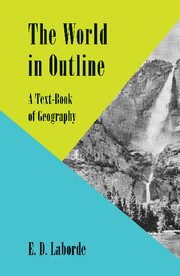Human Geography
from PART V - SOUTH AMERICA
Published online by Cambridge University Press: 05 June 2016
Summary
Exploration and Settlement. South America was discovered by Christopher Columbus. The great navigator not merely found the New World, but also the great triangular sailing route there and back to Europe. In 1492, he reached San Salvador in the Bahamas, and, after visiting Cuba and Hispaniola, returned home to report his success. In his third voyage (1498), he reached the island of Trinidad and coasted westward as far as Cape Codera. In 1499, Amerigo Vespucci is supposed to have explored the north coast from near the mouth of the Amazon to the Gulf of Maracaibo, and, since he was the first who seems to have realised the continental nature of the new land, his name was given to it in the form of ‘America’.
Meanwhile, an agreement had been reached in the Treaty of Tordesillas (1494) between the two great maritime nations, Spain and Portugal, to divide the newly discovered parts of the world between them, Spain taking all areas west and Portugal everything east of the 47th meridian of W. Longitude. Hence, in 1500, when the Portuguese navigator Cabral chanced on the eastern bulge of Brazil while on his way to India, this portion of South America fell to Portugal. In the next year a Portuguese expedition was sent out under Amerigo Vespucci, who explored the whole of the east coast of Brazil.
The exploration of the continent now followed rapidly. In 1513, Nuñez de Balboa crossed the Isthmus of Panama and discovered the Pacific Ocean, and de Solis sailed along the east of Brazil and explored the River Plate, losing his life at the hands of the Indians there. In 1519 Magellan's expedition, which succeeded in sailing round the world, completed the exploration of the east coast as far as the Strait of Magellan, and passed up the east coast to about the latitude of Valparaiso. Other Spanish expeditions were in the meantime pushing southwards along the west coast. In 1531, Francisco Pizarro conquered the empire of the Incas in Peru, Ecuador, and Bolivia, and his partner Almagro tried, but failed, to overcome the natives of Chile in 1535. It was not until some years later that Valdivia and his men reached the Strait of Magellan.
- Type
- Chapter
- Information
- The World in OutlineA Text-Book of Geography, pp. 412 - 418Publisher: Cambridge University PressPrint publication year: 2013



